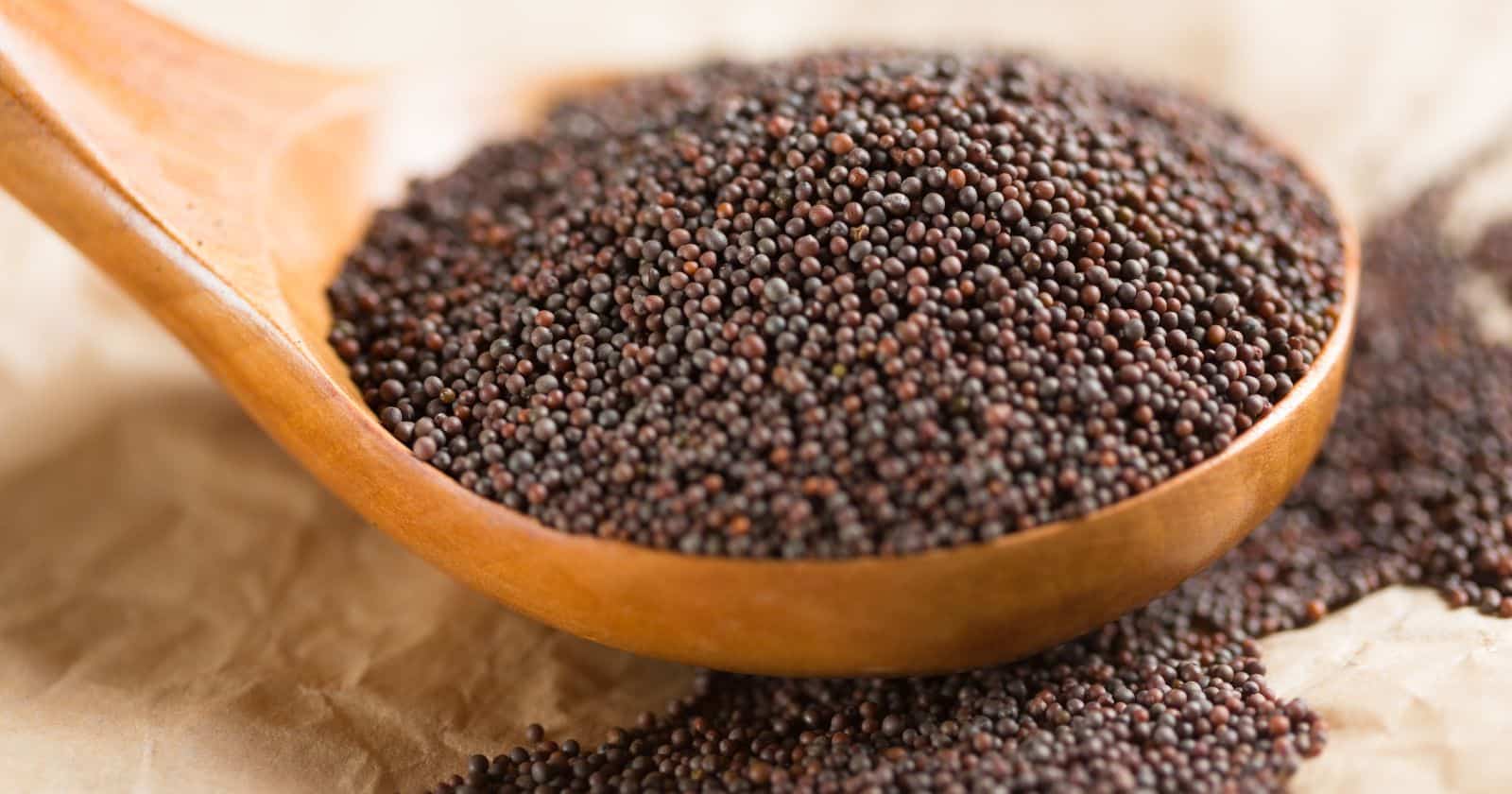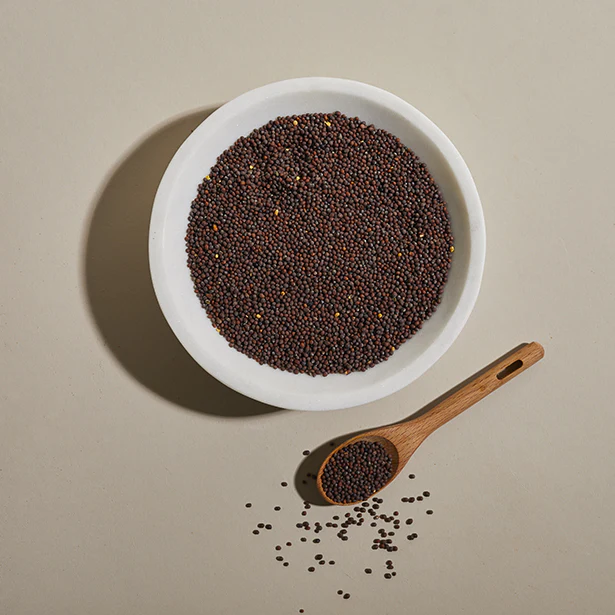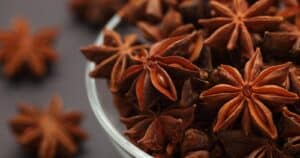Don’t let the name fool you; brown mustard seed adds flavor to your favorite dishes and offers many health benefits!
In this Ultimate Guide to Brown Mustard Seed, we’ll cover everything from how it can liven up your cooking to the best techniques for storing and using this pungent
We’ll look at what distinguishes brown and yellow mustard seeds and how they’re harvested and processed before entering our kitchens.
In addition, we’ll delve into how this
Most importantly, we’ll explore some superpower health benefits you might reap by incorporating brown mustard seed into your routine!
From promoting digestive support to combatting cold symptoms — there are so many surprisingly advantageous ways to use one tiny seed.
So join us as we introduce you to all things brown mustard see! This resource will teach you every facet of cooking with hearty spices, proving that tiny ingredients carry strong potential.
What Is Brown Mustard Seed And How Is It Different From Yellow Mustard Seed?
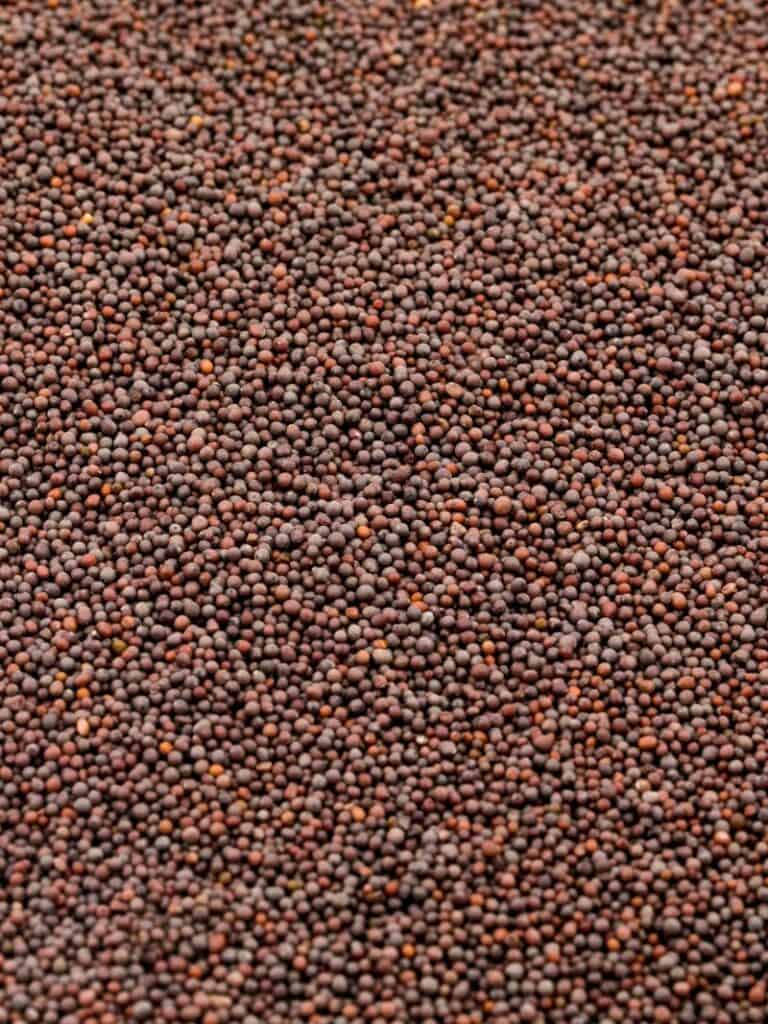
Mustard seeds come in three types – yellow, brown, and black. Brown mustard seeds are about the same size as yellow but darker yellow.
These dark mustard seeds contain similar constituents, including about 30 to 40 percent vegetable oil, a slightly smaller proportion of protein, and myrosin.
This enzyme gives them their strong, distinctive flavor and heat.
Brown mustard gets much of its flavor from being more closely related to the other two types of mustard – black and white – than it is to yellow mustard.
Aside from its use as a
It adds whole to recipes or can be soaked in water before adding to soften its tough skins and make it easier to digest.
Brown mustard’s unique flavor and tendency to absorb liquids contrast greatly when added to salads or vinaigrettes.
Harvesting and processing brown mustard seed is as fascinating as this flavorful condiment!
It’s typically harvested by hand in early spring for use during cooler months. as gourmet condiments or ingredients for food products like mustards, pickles, sauces, and marinades.
The crop must be carefully cultivated for these unique flavors two thrive.
So the next time you enjoy a meal spiced with brown or any other mustard, you’ll know how much went into getting it from the soil to your plate!
Harvesting And Processing Brown Mustard Seed
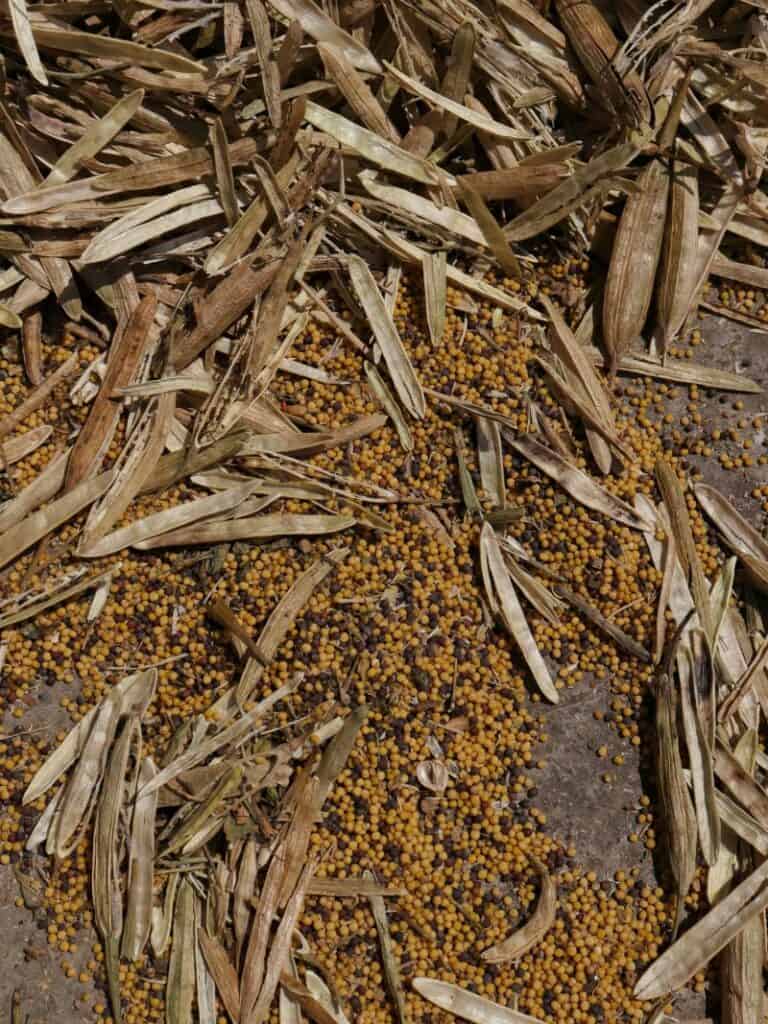
The process begins with harvesting the plants – when they are ready and have ripened, they need to be placed in a single layer on screens or trays where they can dry.
Once dehydrated, gently rub the stems to remove the pods and silks from around the seeds.
You’ll also need to winnow out any chaff – the lighter materials stripped away alongside what you’re looking for.
Once the harvesting process is complete, you can begin soaking the brown mustard seeds in water for at least four hours and up to two days – this helps to loosen the husks and make it easier to remove them without damaging the delicate seed inside.
After rinsing off any leftover husk, it’s time to dry again so the seed inside can work its magic!
So what does this tiny seed bring in terms of flavor? Brown mustard seed has a spicy yet pungent aroma, and these small but mighty seeds add an aromatic taste to much-loved dishes.
With their rich depth of flavor, it’s no surprise they are found in many cuisines worldwide!
Flavor Profile Of Brown Mustard Seed: Spicy, Pungent, And Aromatic
Brown mustard seed stands out among the varieties of mustards with its earthy, sweet flavors and sharp flavor profile.
It’s the preferred choice for the traditional pastrami sandwich on rye bread and other deli favorites, thanks to its assertive and unique flavor that can stand up to the most strongly-flavored meats.
The intense flavor of brown mustard seed comes from oil in the seed that is released when cooked over high heat.
Once released, it will take on a pungent aroma and powerful kick, which makes this a go-to choice for dishes featuring hearty meats like pastrami and steak.
In Germany, Dusseldorf spicy brown mustard is typically served alongside roasted steak to bring out all of the delicious flavors of the meat.
Add curry powder early in the cooking process to get even more taste into your dishes so that all elements can fully disperse throughout your whole dish.
By doing this, you’ll ensure that all those unique flavors are well-blended and balanced.
As you explore new recipes with brown mustard seed, you’ll realize there is no end to the unique dishes you can create!
The intense taste of brown mustard seed can make a bold statement in any dish, but don’t let it overpower other ingredients – use it sparingly to best achieve balance and complexity of flavors.
Savory Dishes That Feature Brown Mustard Seed
Brown mustard seeds are a wonderful
They’re commonly used in Indian, African, and European cuisines and are a staple in many kitchens worldwide.
If you’re looking for some inspiration on how to incorporate brown mustard seeds into your cooking, here are some savory dishes to try:
Roasted Vegetables
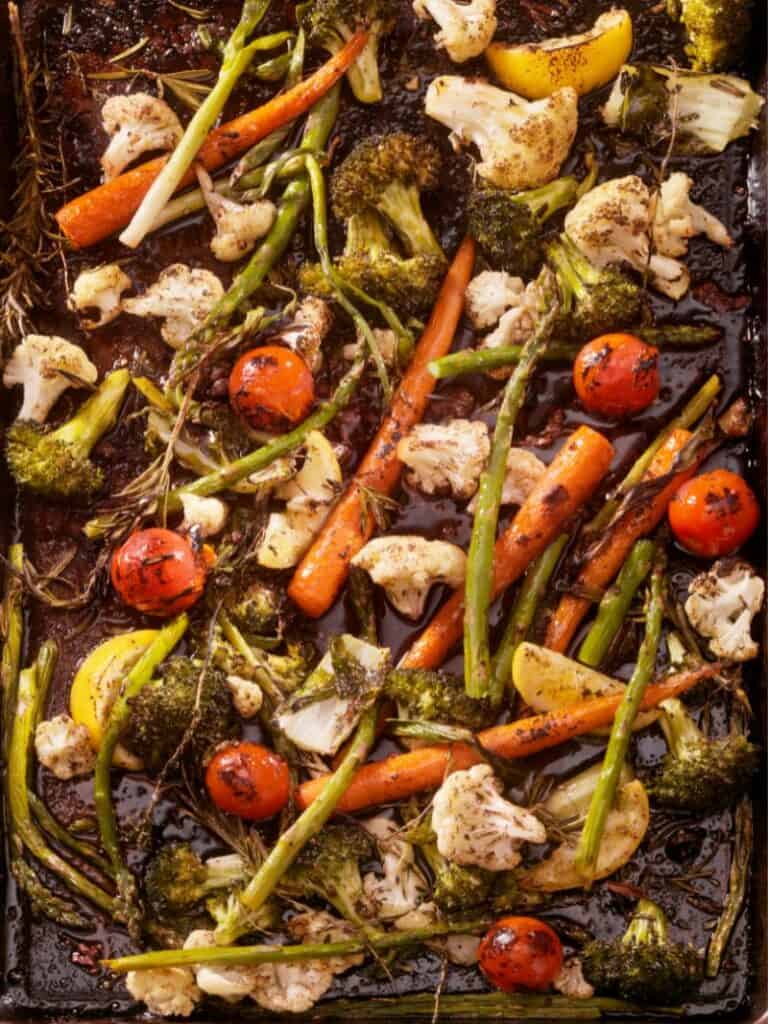
Toss some chopped carrots, potatoes, and onions with olive oil and a teaspoon of brown mustard seeds.
Roast in the oven until tender and crispy, and enjoy the tangy, spicy flavor of the mustard seeds.
Meat Marinade
Combine brown mustard seeds with vinegar, garlic, and your favorite herbs and spices for a flavorful meat marinade.
This works exceptionally well with chicken and pork.
Lentil Soup
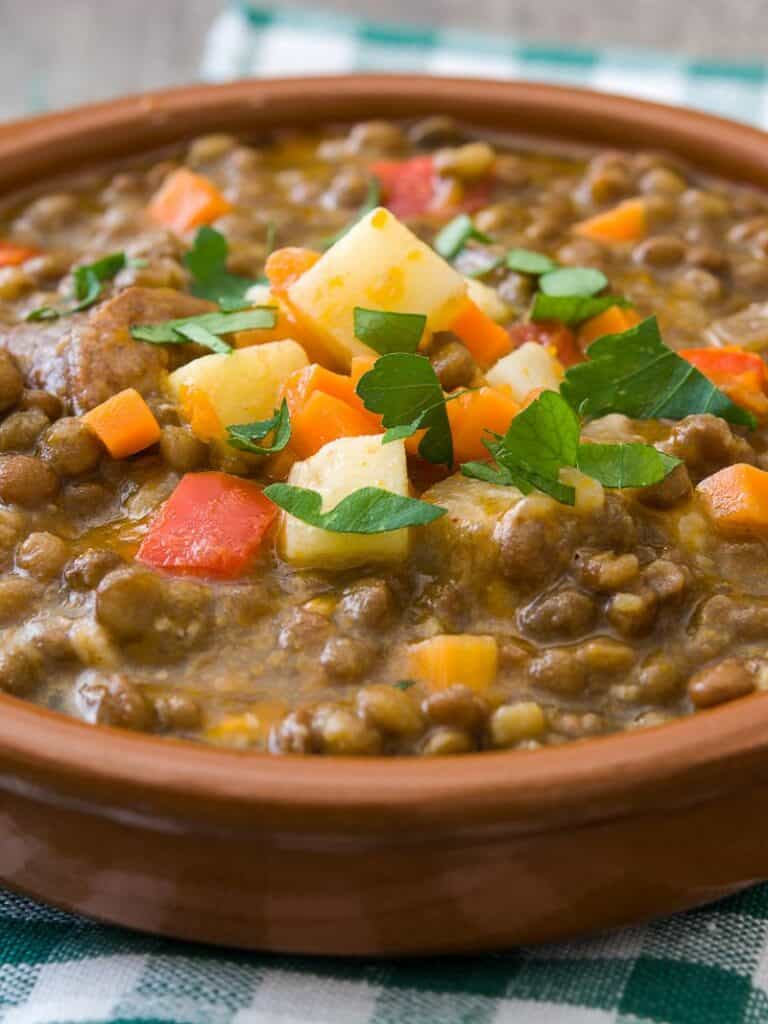
Add a tablespoon of brown mustard seeds to your favorite lentil soup recipe for an extra kick of flavor. The seeds also add a pleasant texture to the soup.
Pickles
Brown mustard seeds are a great addition to homemade pickles.
Add them to a mixture of vinegar, sugar, salt, and your favorite vegetables (such as cucumbers or carrots), and let them sit in the fridge for a few days to develop their flavor.
Salad Dressing
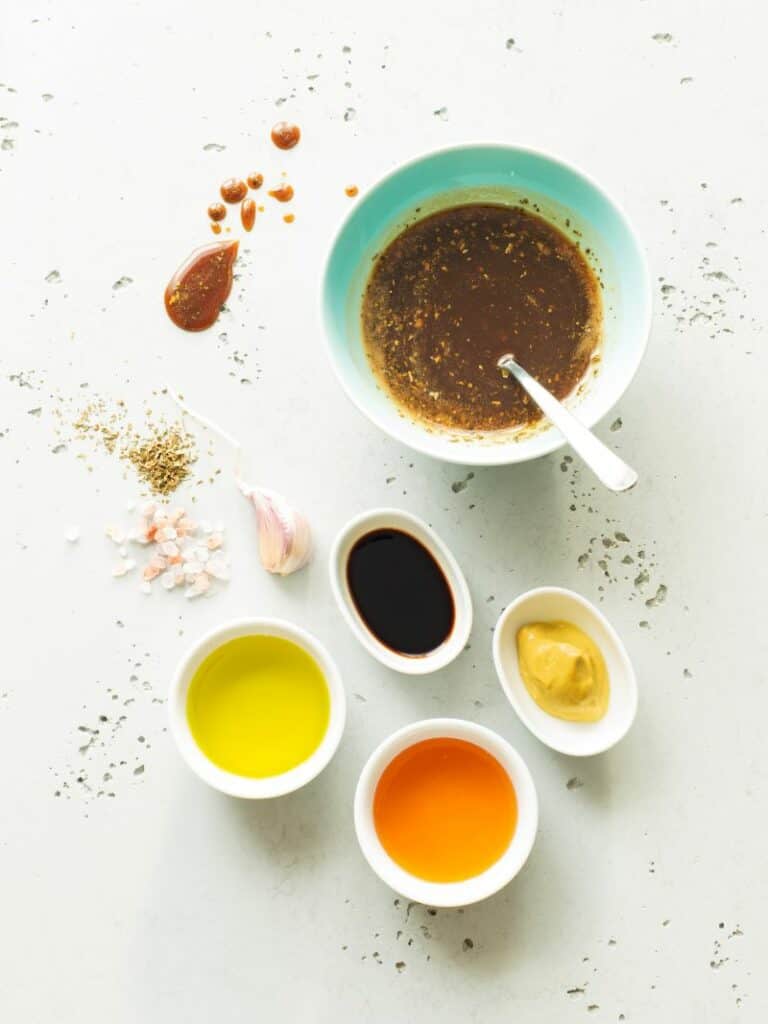
Mix brown mustard seeds with olive oil, vinegar, honey, and your favorite spices for a zesty salad dressing perfect for drizzling over fresh greens.
Health Benefits Of Brown Mustard Seed: What You Need To Know
One of the most versatile and flavorful kitchen ingredients, Brown Mustard Seed, is taking center stage.
This seed offers many health benefits, whether used as a powder or in its whole form. Not only do Mustard Seeds contain beneficial proteins, calcium, and vitamins, but they also contain two antioxidants that can help fight off free radicals.
Eating Mustard Seeds, leaves, or paste is considered safe for most people and can easily be incorporated into your meals without fuss.
Adding Brown Mustard Seed to your diet provides numerous health benefits, such as improved digestion, lowered cholesterol levels, and protection against certain cancers.
Its rich and pungently spicy flavor makes it the ideal
More than just a condiment for hot dogs, Brown Mustard Seed is incredibly diverse and easily adaptable to many recipes.
Enjoy all the excellent health benefits by incorporating this wonder ingredient into salad dressings, sauces, and vegetable dishes!
How to Storing And Use Brown Mustard Seed
Brown mustard seed is a versatile ingredient used in many recipes, but proper storage and use are essential to maintain its freshness and quality.
When storing brown mustard seed, please keep it in a cool, dry place, away from sunlight and moisture. It’s best to hold it in an airtight container to prevent it from losing its pungent aroma and flavor.
When using brown mustard seed in recipes, you can grind the seeds with a mortar and pestle or use a
Toasting the seeds beforehand can also bring out their nutty flavor and add depth to the dish.
Brown mustard seed can be used in many savory dishes, such as curries and roasted vegetables, or as a seasoning for meats.
To make your mustard, you can soak the seeds in liquid (like vinegar, beer, or wine) and add spices and herbs to create a unique flavor.
After blending, let the mustard rest for a day or longer to allow the flavors to meld and develop.
You may also need to adjust the consistency by adding water or vinegar to get the desired texture.
Brown Mustard Seed Substitutes
Plenty of substitutes can give your dish that special kick when you’re in a pinch and don’t have a brown mustard seed.
Here are some of the best alternatives to try:
Yellow Mustard Seed
While not as intense as a brown mustard seed, yellow mustard can still add a tangy flavor to your dishes. Most recipes use it in a 1:1 ratio to a brown mustard seed.
Black Mustard Seed
Try using the black mustard seed for a more robust, pungent flavor. Use it in a 1:2 ratio to a brown mustard seed in most recipes, but use it sparingly if you’re not a fan of heat.
Ground Mustard Powder
Ground mustard powder is an excellent option if you want a milder flavor. It has a similar profile to brown mustard seed but with less intensity. Most recipes use it in a 1:1 ratio to a brown mustard seed.
Horseradish
Another great substitute, horseradish, has a similar spicy kick to a brown mustard seed. Use it in a 1:1 ratio to a brown mustard seed in most recipes, but remember that it has a distinct flavor that may not work in all dishes.
Homemade Brown Mustard Recipe
Homemade Brown Mustard Recipe
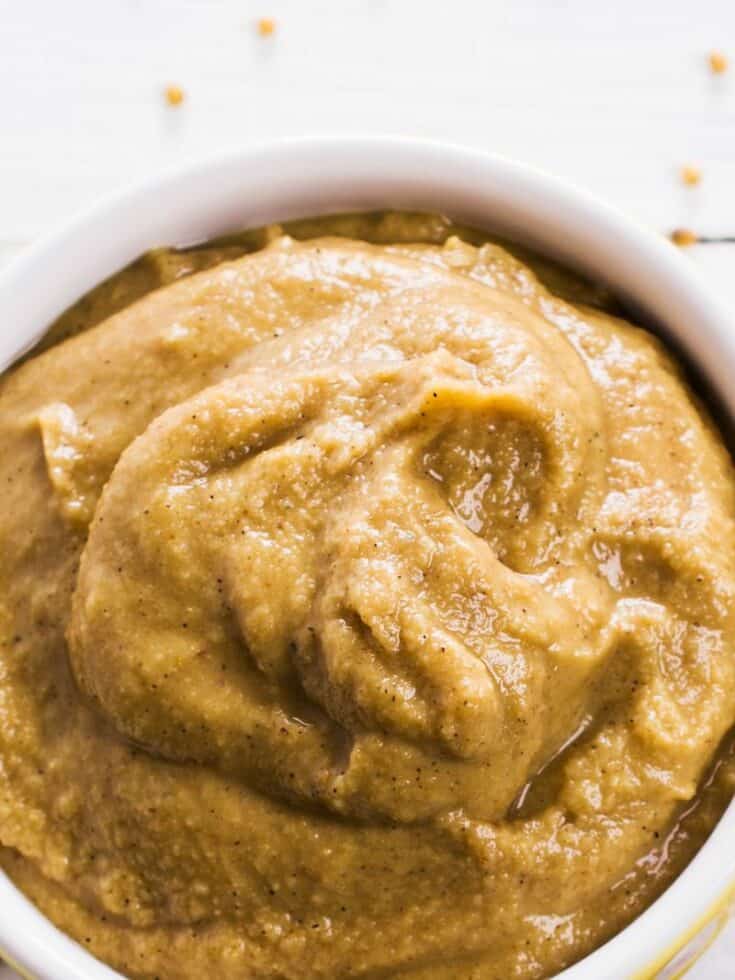
Making your own mustard from brown mustard seed is not difficult and can be incredibly rewarding.
To start, combine the slightly crushed seeds, mustard powder, and salt in a small bowl.
Depending on the recipe you use, you may want to raise or lower the degree of spiciness by fiddling with the ratio of crushed seeds to powder.
Understanding how heat tempers the spiciness can provide more control over how your mustard tastes too.
If you want to keep that sharp flavor, keep it cold; if you're looking for something smoother with a lower spice level, give it some heat!
Ingredients
- 1/2 cup brown mustard seeds
- 1/4 cup mustard powder
- 1/2 teaspoon salt
- 1/2 cup apple cider vinegar
- 1/4 cup honey (optional)
- 1/2 teaspoon turmeric (optional)
Instructions
- In a small bowl, combine the brown mustard seeds, mustard powder, and salt. Adjust the ratio of seeds to powder to your desired spiciness level.
- Add in any additional spices or herbs that you would like to use for flavor.
- Pour in the apple cider vinegar and honey (if using) and stir until well combined.
- Cover the bowl with a lid or plastic wrap and let the mixture sit for at least 24 hours to allow the flavors to meld together.
- After 24 hours, add turmeric (if using) and stir to combine.
- If the mustard is too thick, you can add a pinch of water to adjust the consistency.
- Transfer the mustard into an airtight jar and store in the fridge.
- Enjoy your delicious homemade brown mustard on sandwiches, burgers, hot dogs, and any other dish that calls for a bit of tangy heat!
Notes
Making your own brown mustard from scratch may take some time, but the process is simple and the results are worth it.
With a little creativity and experimentation, you can customize your mustard to your exact preferences.
And by properly storing your homemade mustard, you can enjoy it for weeks to come.
Where to Buy Brown Mustard Seed?
Looking to add some brown mustard seeds to your
Don’t worry; it’s easy to find! You can purchase brown mustard seeds at grocery stores, health food stores, and online retailers.
It’s also often available in bulk, which can be a great option if you use it frequently in your cooking.
If you prefer organic or non-GMO options, check the labeling before purchasing. Many brands offer these options; you can find them online and in physical stores.
With so many options available, getting some brown mustard seed and experimenting with new and exciting flavors in your cooking is easy!
One can hear the pop of mustard seeds in homes and restaurants across South Asia.
When warmed, these small Brown Mustard Seeds release an aromatic oil essential to many curries.
In Europe and America, mustard seeds are more often used in sausage and to make slaw.

